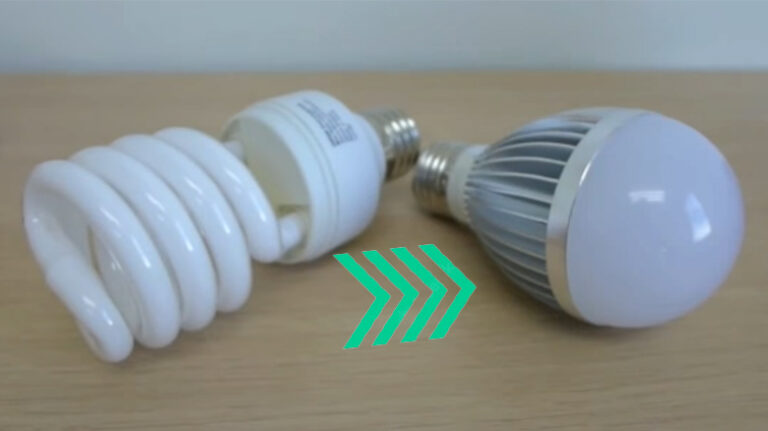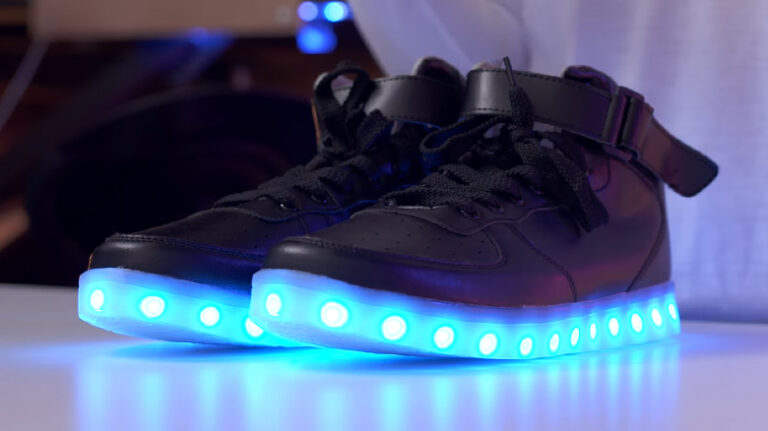What Type Of Load Is LED Lighting? Inductive or Resistive Load on LED Light
A “load” refers to something an electronic circuit drives. This happens because it consumes the circuit’s energy and stresses it. Loads are classified into two types: inductive and resistive, while capacitive loads are commonly mentioned as well. Particular circuit boards can be inductive or resistive depending on their output.

So, how much of a load are LED lights, and what’s wrong with them? Although the capacity of a driver to convert AC to DC prohibits LED bulbs from being completely resistive with just a power factor of one, most LEDs have a power factor of 0.8 or more. LEDs function as a resistive load.
There are several difficult ideas that you may not understand if you are not a power equipment specialist so we will explain them here:
- Differentiating between inductive and resistive loads
- What type of load do LED lights have?
- The significance of LED light power factor
What Type Of Load Is LED Lighting – Distinction Between Inductive And Resistive Loads
Before delving into the difference between both inductive and resistive loads, we must first establish a few essential electrical “basics.” Additionally, we use the term “basics” widely since these subjects can quickly become puzzling, so don’t be alarmed if it takes some time to comprehend. We’ll do our best to keep it as easy as possible.
To begin, you must understand that there are two types of electrical current: direct current (DC) as well as alternating current (AC) (DC). Direct current typically travels in a single direction, although alternating current power can fluctuate. This is because battery-powered gadgets utilize direct current (DC), but power in our home circuits is almost usually alternating current (AC).
An AC circuit contains power flow or even the power absorbed by the circuit’s loads. This is measured in Watts and is sometimes referred to as True Power. The letter P is used as its logo.
Reactive power is the electricity that flows backward in a circuit when the direction changes. It is measured in Volts-Amps-Reactive, or VAR, and refers to the energy received and returned to the load. The letter Q is used as its logo.
The apparent power of an AC circuit is the total of the electricity spent (or dissipated) and the electricity received or returned. It has the symbol S and is measured in Volt-Amps. Having you around?
Inductive and Resistive
Let’s look at inductive and resistive loads presently. Resistive loads are things that only produce resistance.
If a load is resistive, it uses the entire quantity of active energy. As a result, it requires all of the active surface power to work. A resistive load serves the same purpose both in AC and DC. A standard incandescent bulb, which uses the whole amount of power to create heat and hence light, is a perfect example of a resistive load.
Inductive loads, rather than reactive loads, employ reactive power, Q. If a dc supply is sent through an inductive load, this will short circuit since current can flow in both directions. Instead of releasing the energy as heat, inductive loads generate electromagnetic fields. An inductive load is anything with rotating components, such as blades, or anything with motion, such as a washer.
What Kind Of Load Are LED Lights?
Is it necessary for all bulbs to be resistant if fluorescent lamps are? “Somewhat of” is the best response. LED lights are not exactly resistive, but they’re not inductive due to the lack of spinning components. They are classified as a resistive load since they rely mostly on active power. They transduce AC to DC in the LED light driver, which then lights the diode.
Nonetheless, they generate less heat than incandescent lights, which are more precisely resistive. As a result, LED lights cannot be considered resistive loads because they rely on a little quantity of reactive power. Because of the power factor, they are usually considered resistive.
The Importance Of The Power Factor Of LED Lights
A load item’s rating is determined by its power factor, which is the ratio of load current to apparent power. To put it simply, the ratio of an object’s total power consumed to the quantity of energy required to fulfill its job (in the instance of LED lights, which emit light). To put it another way, the power factor tells you how much energy a gadget loses.
A power factor of one is ideal for any electrical equipment. This means there is no wastage and the power consumed is exactly what is needed. The power factor of LED bulbs fluctuates, and low-cost bulbs might have a power factor of less than 0.5. However, employing them would waste resources since the LED lights would require significantly more electricity to function.
Power Factor Your LEDs Should Use
Lightbulbs marketed in the United States must possess a minimum power factor of 0.7, according to Energy Star, which is recognized by US authorities and symbolizes energy efficiency. The lower your carbon footprint, the nearer you will be to 1. However, before buying a property, you need to be mindful of two things:
Because LEDs are now so energy-efficient, the difference in power factor over a LED bulb is unlikely to create a significant impact on electric expenditures. Using 12W to illuminate a 6W bulb with a power factor of 0.5 is still 400% more affordable than using 60W to light a 60W traditional lightbulb with a power factor of 1.
Because the influence on domestic lighting is so minor, most shops will not reveal the power factor of light bulbs on product specifications. The Energy Star certification emblem can also be encountered, however, it is rare. In reality, large-scale lighting installations are more likely to consider the power factor.
If you have industrial or commercial lighting, use an LED bulb provider that can give you the power factor data you require to lower the cost of operating the system. When it comes to house illumination and power factor, however, there is just one option: mix and match lightbulb kinds.
Assume you attach an LED bulb to a circuit that only contains an incandescent with a power factor of one. The traditional lights will then take all of the electricity, perhaps causing the LEDs in the circuit to flicker. Attempt to keep all of the lights on a single circuit consistent.
Frequently Asked Questions
LED Load Capacitive?
LED lights aren’t strictly resistive, but they also aren’t inductive because they do not even contain revolving components. Since they primarily rely on active power, they are regarded as a form of resistive load. They operate by converting AC to DC in the driver of the LED light, which then illuminates the diode.
Is the Load of Lights Resistive?
The current and voltage waves in resistive loads, such as bulbs, coincide or are in phase with one another. The simple sort of load is a resistive load, as you could infer from the name, which just opposes the flow of electrical current.
Luminaires are They Inductive Loads?
When the wire is wound in this manner, the filament resembles an inductor more or less. Lightbulbs, however, are not regarded as inductive loads.
Final Words
Load type adds another layer of complexity to judging the effectiveness of an electric product. You may claim that because they don’t lose any power, 100% resistive loads appear to be more effective than inductive loads when compared.
But that’s overly simplistic. Incandescent bulbs, for example, can be entirely resistive since they consume all of the power. They are, however, creating both heat and light with that power. As a result, understanding this subject is helpful, especially if you are in charge of larger lighting systems where every penny of efficiency matters. Despite significant power loss, LED lights remain the most energy-efficient alternative when used at home.






